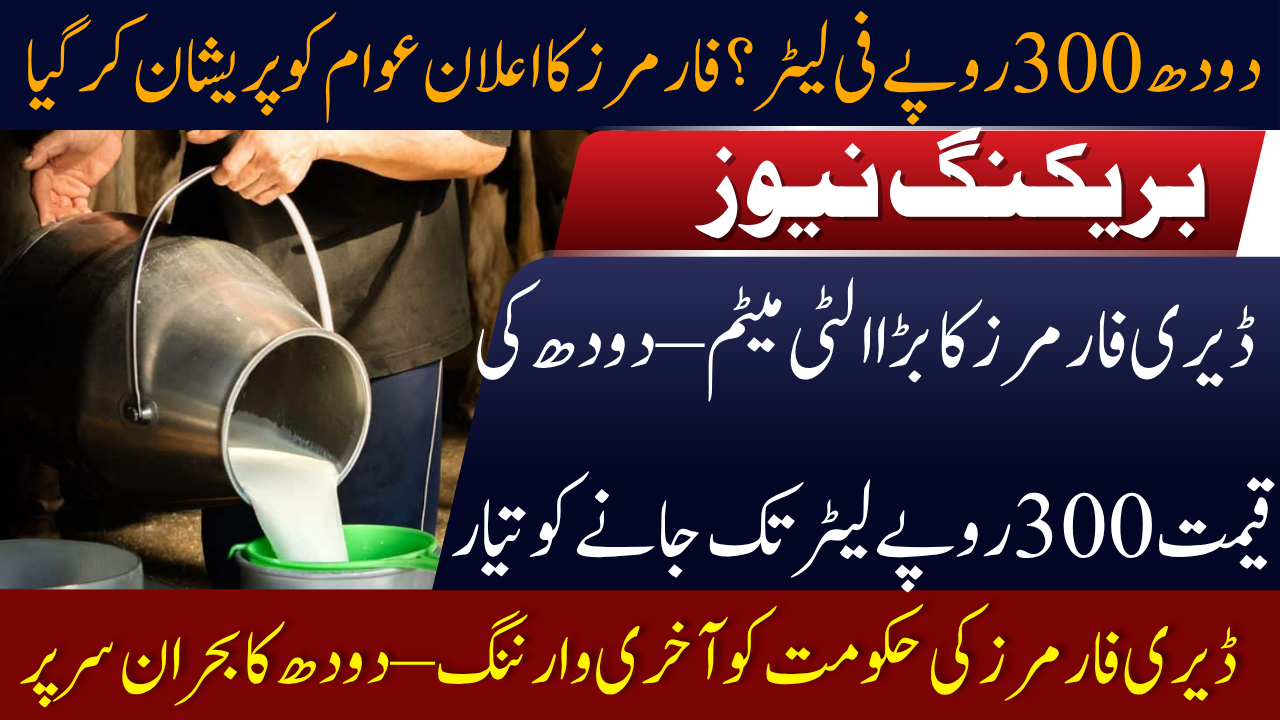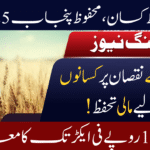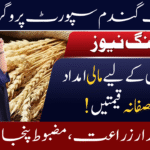The dairy industry in Pakistan is once again at a critical point, as dairy farmers have issued their final warning to the government regarding the rising cost of milk production. If immediate action is not taken, the price of fresh milk is expected to skyrocket to Rs. 300 per liter in the coming weeks, sparking fresh inflationary pressure on households already struggling with high food prices.
Currently, the average retail price of fresh milk in major cities like Karachi, Lahore, and Islamabad ranges between Rs. 220 to Rs. 250 per liter, but farmers insist that the existing rate is unsustainable due to increased input costs.
Why Are Dairy Farmers Demanding Higher Milk Prices?
According to representatives of dairy associations, multiple factors are behind their demand to increase the official milk price ceiling:
- Rising feed costs: The price of animal fodder and grains has gone up by more than 30% in the past year.
- Inflation in fuel and electricity: Transporting milk from farms to cities has become significantly more expensive.
- Veterinary expenses: Medicines, vaccines, and livestock maintenance costs have doubled.
- Unregulated middlemen: Retailers and wholesalers often pocket large margins, leaving farmers with little profit.
Farmers argue that unless the government addresses these challenges, they will be forced to sell milk at Rs. 300 per liter to survive.
The Impact on Consumers
If milk prices reach Rs. 300 per liter, the consequences for consumers will be severe:
- Household budgets will be further burdened by higher grocery costs.
- Milk-based products such as yogurt, butter, cheese, and sweets will also see a sharp rise in prices.
- Restaurants, tea stalls, and bakeries may increase menu prices.
- Middle- and low-income families, already under pressure from inflation, may reduce milk consumption, impacting nutrition levels.
Government’s Response
The government has acknowledged farmers’ concerns but has urged them to avoid unilateral price hikes that could harm consumers.
- Provincial price control committees are negotiating with dairy associations.
- Authorities are exploring subsidies on cattle feed and veterinary medicines to reduce production costs.
- Strict action is being considered against hoarding and profiteering middlemen.
However, farmers insist that unless concrete measures are taken, they will proceed with their demand.
Quick Details of the Issue
| Factor | Current Situation | Impact |
|---|---|---|
| Current Milk Price | Rs. 220 – Rs. 250 per liter | Affordable but unsustainable for farmers |
| Proposed Price | Rs. 300 per liter | Big hit to consumer budgets |
| Reason for Increase | High feed, fuel, medicine, transport costs | Farmers’ survival threatened |
| Government Response | Negotiations, possible subsidies | Trying to prevent sharp hikes |
| Deadline | “Last warning” issued in October 2025 | If ignored, prices may rise soon |
Expert Opinions
Economists warn that unchecked increases in milk prices could trigger a chain reaction of food inflation. Since milk is a staple in every household, any surge will push up the cost of multiple daily essentials.
Nutritionists also highlight that reduced milk intake could harm children’s health, especially in low-income families, leading to higher risks of malnutrition.
What Consumers Can Do
While awaiting government intervention, consumers are advised to:
- Purchase milk from verified dairy outlets instead of private middlemen.
- Store powdered or packaged milk as an alternative in case of shortages.
- Report retailers charging above-notified prices to local authorities.
- Stay updated on official price notifications from district administrations.
Conclusion
The warning from dairy farmers highlights a deep-rooted issue in Pakistan’s supply chain — rising production costs without corresponding government support. If milk prices climb to Rs. 300 per liter, it will add another layer of financial stress for millions of households.
The coming weeks will be decisive: either the government introduces relief measures to stabilize prices, or consumers must brace themselves for another wave of inflation on essential commodities.









